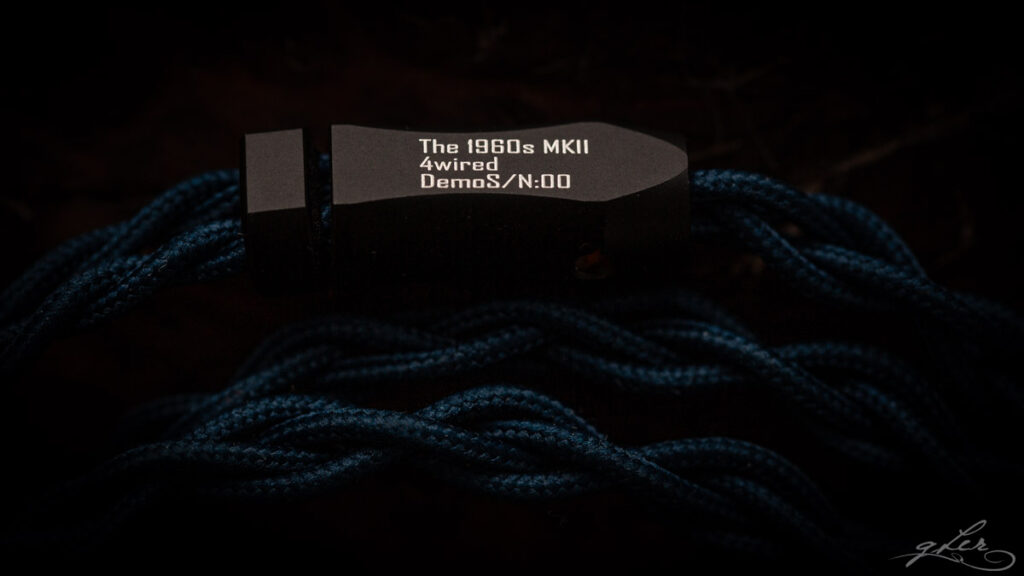A big thank you to Praesto’s Crystal Tsui for arranging and sending us a very rare and limited sample of the new The 1960s Mk II cable in exchange for our open and honest opinion and comparative review. Your support is greatly appreciated.
If you’ve read my reviews of PW Audio’s majestic Orpheus Shielding, and also First Times Shielding – one of the company’s next-generation of shielded flagship-level cables – then I don’t need to tell you that a newcomer to the cable elite is big news.
It’s even bigger when the newcomer replaces one of PW Audio’s most successful cables: The 1960s. Created as part of the Century Series of cables which, if you follow the marketing spiel, represents sonic traits from different eras of music, The 1960s was initially offered as a 2-wire paracord-covered cable alongside the more elaborate (and expensive) 4-wire The 1950s.
Both cables, I have on good authority, are direct adaptations of US-based Cardas Copper’s Cardas Clear (The 1950s) and Clear Light (The 1960s) cables, with only the latter ever being released by Cardas as an IEM cable. Even though the evidence of their Cardas origins is overwhelming (the PW Audio wires are physically identical to their Cardas counterparts), the link has never been officially verified as far as I’m aware.

Still, the ‘controversial’ nature of these cables (Cardas wire of the same type used in headphone cables is considerably less expensive), combined with their exemplary performance compared to most other IEM cables at the time of their release (and still today), cemented their legendary status among IEM audiophiles.
I have no idea whether The 1960s Mk II, the successor to the 4-wire version of The 1960s (currently being sold as The 1960s SE), retains the ‘Cardas Heritage’ of its predecessors, but it certainly ups the performance bar of those cables even further. Which is to say, the new $2,400 ‘co-flagship’, updated with PW Audio’s modern hardware, sevenfold braiding structure, and additive shielding technology, is playing at the very highest level, again.
Look and feel
Since we were sent a non-retail demo sample of The 1960s Mk II, I can’t comment on the final packaging and accessories the cable comes with when purchased through official retail channels like Praesto (and presumably MusicTeck once the cable is available in wider release).
What I’ve gleaned from the retail sites, however, is that you can expect the same solid metal container that both Orpheus and FTS ship with, minus the fancy briefcase packaging of those cables.

First visual impressions suggest the 4-wire The 1960s Mk II doesn’t have quite the same level of shielding as those two cables either, with the Morandi Blue nylon jacket more reminiscent of the 4-wire First Times (non-shielding version), and the 2-wire August Fun (purportedly the successor to the 2-wire The 1960s). Everything else about The 1960s Mk II design is similar, including the current PW Audio matte black hardware, chin slider, clear angular ear guides, and black-and-gold-plated 2-pin connectors.
What is very different, however, is the 4.4mm Pentaconn plug. This is the first time I’ve seen an un-plated pure-copper connector plug, which according to PW Audio, improves signal clarity even further. Still, I worry about the hardiness of the unprotected copper surface, and more than once I’ve had to wipe down the connector to fix a weak signal contact with some of my DAPs (The 1960s Mk II comes with an anti-tarnish cloth for this very reason).
If you’ve used any of the modern PW Audio fabric-covered cables, you’ll be right at home with The 1960s Mk II. I know some people complain of microphonics from the sheathing material, but I’ve personally never found that to be an issue.

I also like the thicker nature of these cables, and even the heavyset Shielding cables never bothered me at all. The 1960s Mk II is notably lighter and less stiff than Orpheus and FTS with their added shielding bulk, so handling the new cable really shouldn’t’ be an issue unless you absolutely insist on using featherweight cables with your IEMs.
Cable tech
I’ve already hinted at how vague Peter Wong can be about the materials, geometry and technology that he uses for his cables, preferring users ‘experience the sound’ and decide for themselves. That’s all good and well, but as any serious audiophile will tell you, what’s inside the gear is often just as important to them as how it performs.
The best I can do here is go by what the published specs tell me. According to PW Audio, then, The 1960s Mk II features:
- Pure 26 awg OCC copper Litz stranding
- The 1950s cable structure/geometry
- New sevenfold pipe design for cleaner signal transmission
- Additional shielding material (unspecified)

If the description is to be believed, The 1960s Mk II has more in common with its fellow Century Series (and still current) The 1950s cable than it does with Orpheus and FTS. What’s different is the new sevenfold pipe design, which according to PW Audio: “has been applied multiple times to PW Audio’s new flagship cables, where the twisting pattern enables faster message transmission speed with less loss.”
It’s highly likely, then, then it won’t be competing at quite the same summit-fi technical level as those two ‘ultra-shielded’ cables, but as you may have already gleaned from my FTS review, technical performance doesn’t always correlate with preference in this hobby.
Continue to sound impressions…



